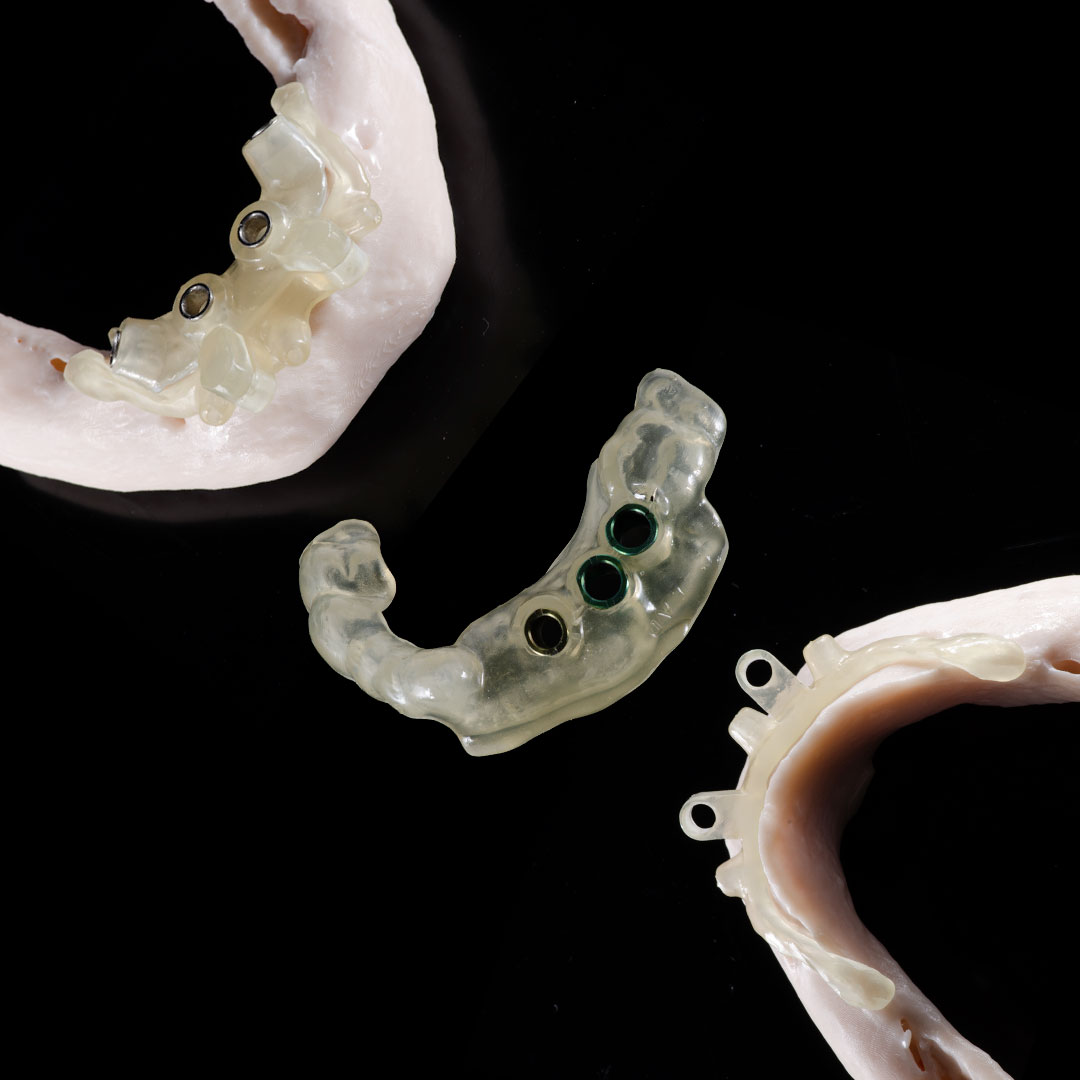The Role and Importance of Surgical Guides in Modern Dentistry
Surgical guides have become an indispensable tool in modern dental practice, particularly in the fields of implantology and reconstructive oral surgery. These devices are custom-designed for individual patients and act as precise templates to direct the placement of dental implants, ensuring optimal accuracy, safety, and outcomes. In this blog, we will explore what surgical guides are, their types, how they are made, and their benefits in dental surgery.
What is a Surgical Guide?
A surgical guide is a device, usually made from a biocompatible plastic or resin, that is used during dental surgery to direct the surgical instruments and implants to predetermined locations. It is designed based on CBCT and soft tissues scan of the patient’s mouth, which ensures that each implant is placed with precision according to a pre-planned surgical plan.
TYPES OF SURGICAL GUIDES
1. Tooth-supported guides: These are the most common type of surgical guides, resting on the existing teeth to position the implant.
2. Mucosa-supported guides: Used in edentulous patients (patients with no teeth), these guides sit on the gum tissue.
3. Bone-supported guides: These are used when extensive reconstruction is required, and they attach directly to the bone.
Creation of Surgical Guides
The process of making a surgical guide starts with the acquisition of detailed dental images, typically using cone-beam computed tomography (CBCT). These images provide a 3D view of the patient’s dental anatomy. Using specialized software, a dentist or a dental technician can then plan the exact location, angle, and depth for each implant.
Then This digital plan is sent to a dental lab where the actual surgical guide is designed and fabricated, often using 3D printing technology. This technology allows for high precision and customization to fit the patient's anatomy perfectly.
# Benefits of Using Surgical Guides
- Visualize potential implant site in 3D in relation to the proposed prosthesis.
- Precise implant placement.
- Less risk of compromising adjacent vital structures.
- Prefabrication of the prosthesis, abutments and immediate loading.
- Enables flapless surgery.
Conclusion
Surgical guides represent a leap forward in dental surgery, offering enhanced precision, safety, and overall outcomes. For dentists, incorporating surgical guides into their practice not only improves the quality of care but also boosts patient confidence and satisfaction.
Get in Touch with Our Expert Team
Interested in learning more about how surgical guides can enhance your dental practice? At CAD CAM DENTAL LAB, we specialize in creating custom, precision-engineered surgical guides tailored to meet the specific needs of your patients. Contact us directly through our website messaging for detailed information on our services and to discover how our state-of-the-art solutions can benefit you. Don’t miss out on elevating your practice with cutting-edge technology. Reach out today!

